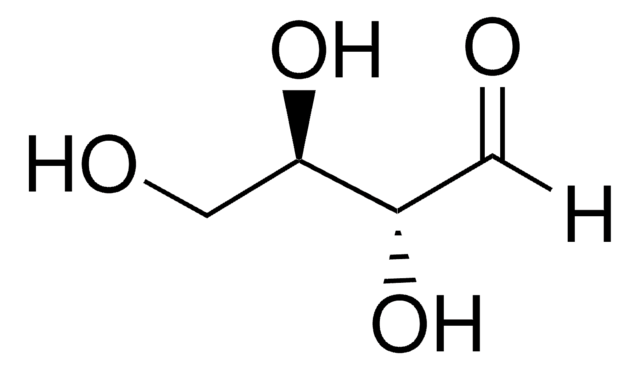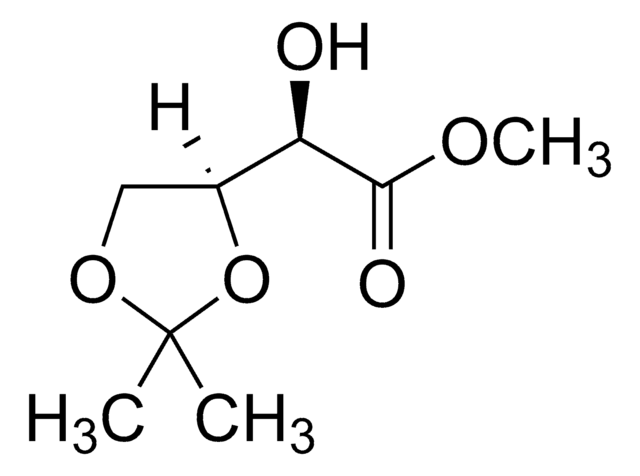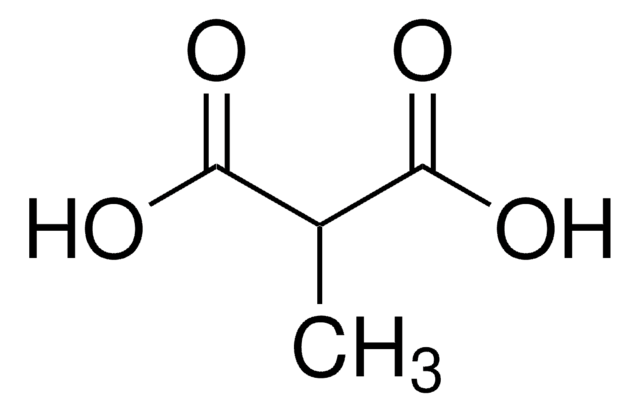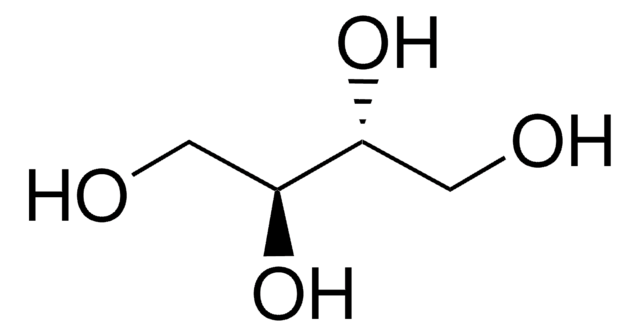75025
D-Erythronic acid potassium salt
≥97.0% (GC)
Sinonimo/i:
(2R,3R)-2,3,4-Trihydroxybutanoic acid potassium salt, Potassium D-erythronate
About This Item
Prodotti consigliati
Livello qualitativo
Saggio
≥97.0% (GC)
Forma fisica
powder
Attività ottica
[α]/D 12.0±2.0°, c = 1 in H2O
Colore
white to off-white
Temperatura di conservazione
2-8°C
Stringa SMILE
OC[C@@H](O)[C@@H](O)C(O)=O.[K+]
InChI
1S/C4H8O5.K/c5-1-2(6)3(7)4(8)9;/h2-3,5-7H,1H2,(H,8,9);/q;+1/t2-,3-;/m1./s1
NIBJBHRBFKKLFG-SWLXLVAMSA-N
Categorie correlate
Azioni biochim/fisiol
Altre note
Avvertenze
Warning
Indicazioni di pericolo
Consigli di prudenza
Classi di pericolo
Eye Irrit. 2 - Skin Irrit. 2 - STOT SE 3
Organi bersaglio
Respiratory system
Codice della classe di stoccaggio
11 - Combustible Solids
Classe di pericolosità dell'acqua (WGK)
WGK 3
Punto d’infiammabilità (°F)
Not applicable
Punto d’infiammabilità (°C)
Not applicable
Certificati d'analisi (COA)
Cerca il Certificati d'analisi (COA) digitando il numero di lotto/batch corrispondente. I numeri di lotto o di batch sono stampati sull'etichetta dei prodotti dopo la parola ‘Lotto’ o ‘Batch’.
Possiedi già questo prodotto?
I documenti relativi ai prodotti acquistati recentemente sono disponibili nell’Archivio dei documenti.
Il team dei nostri ricercatori vanta grande esperienza in tutte le aree della ricerca quali Life Science, scienza dei materiali, sintesi chimica, cromatografia, discipline analitiche, ecc..
Contatta l'Assistenza Tecnica.








